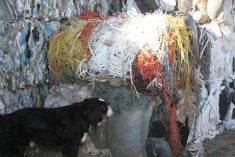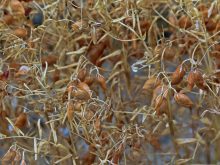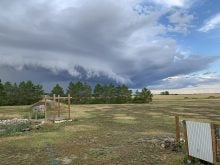SASKATOON (Staff) – Farmers can expect alfalfa varieties with greater disease resistance within five years, said an Agriculture Canada scientist.
Bruce Coulman said established varieties should be verticillium wilt resistant and new varieties should have multiple disease resistance.
“Verticillium wilt is a serious disease in alfalfa,” said Coulman.
It became a problem in North America in the 1980s and is now a significant disease in British Columbia and irrigated regions of Saskatchewan and Alberta, he told producers at a recent Canadian Alfalfa Seed conference.
Read Also

Message to provincial agriculture ministers: focus on international trade
International trade stakeholders said securing markets in the face of increasing protectionism should be the key priority for Canada’s agriculture ministers.
Ten years ago, disease resistance was the focus of breeding programs and farmers are just beginning to see results. Now, research is working to improve forage yields and winter hardiness, he said.
Varieties developed in Eastern Canada are not usually hardy enough for Western Canada.
“In general, varieties are adapted to areas similar to the station that developed them,” Coulman said.
There is some work on hybrid use in alfalfa. Hybrid development has been restricted by the difficulty of producing large amounts of hybrid seed from the cross of good parents. It’s not possible to produce inbred lines of alfalfa.
While some stations are working on bloat-resistance, it will be a few years before bloat-safe alfalfa will be available.














